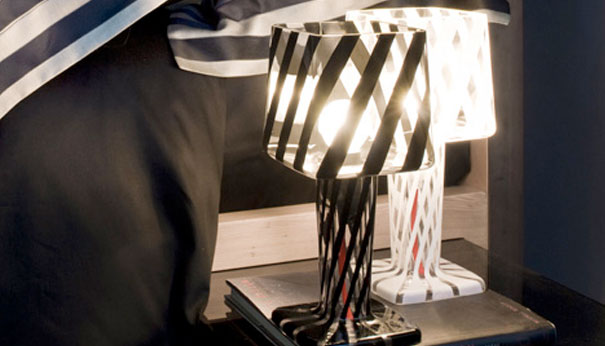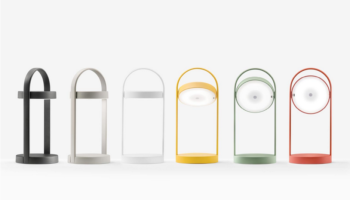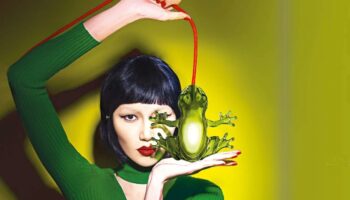J’adore Venice! Terzani Does Too
I love it when a product requires a bit of research, for it lets me see the world beyond the Internet and beyond the confines of my office (sure, maybe I’m seeing it “virtually,” but you take what you can get…). If it weren’t for the occasional arcane reference or laden symbolism of certain designers, I might never expand my knowledge about concepts like “Harlequin,” for instance. Familiar to most as the color of a Great Dane or the inter-locking diamond shapes of certain clown costumes, harlequin actually refers to “comic servant characters from the Italian Commedia dell’arte,” a populist genre of theater in the 16th. century. The Harlequin character functioned primarily as comic relief, showcasing an impressive physicality by executing precise cartwheels and flips.
J’adore Venice. Manufactured by Terzani.
What’s this all got to do with design? I was getting to that… Terzani’s J’adore Venice collection of lamps has the vigorous whimsicality, the playful coloration, the singular look and aspect of those ancient Italian clowns. Terzani’s lineage is the fine Italian tradition of exquisite, handcrafted work in wrought iron, carved wood, and glass. But starting in 1985, when Sergio Terzani teamed up with Jean François Crochet in Paris, the firm found its present identity–as designers and manufacturers of “lamps and objects as lighting sculptures, no longer accessories or cold technical supports but the animated, vital protagonists of living areas, with a completely original and identifiable character.” The description absolutely fits the Venice Collection. These table and suspension lamps are constructed entirely of transparent glass etched with diagonal stripes in white or black. Save for the chrome diffuser and the red power cord, that makes these pieces a one-trick pony—which, when the principal material is delicate and beautiful handcrafted glass, can only be a good thing.

The Venice Collection has a functional appeal as well. Having negotiated the transparent spaces between the stripes, the emitted light is divided into rays and shards that dance around the room, decorating any surfaces it should happen to land on with an enticing interplay of subdued light and suggestive shadow. Terzani’s catch phrase is “Tutto E’ Luce” or “Everything Is Light.” With the scene-stealing propensities of the Venice Collection, they just might convince you it’s true.
Via Trendir




Leave a Reply